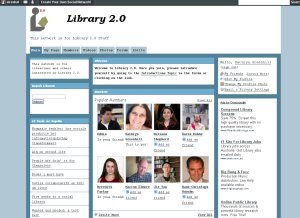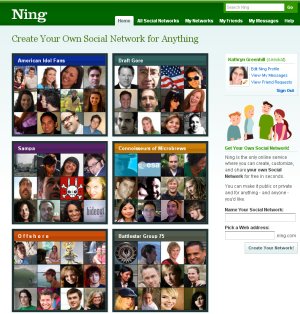A friend emailed me and asked what I thought about using social network technology for university teaching. I had a bit of a think, and this is what I came up with.
I’m presuming that by Social Networking technology you mean networks that exist primarily as social networks like MySpace and Facebook, not general new web tools with a social component like blogs or wikis.
PROs
- The tools for communicating and public debate/thinking in most social networks are far superior to those in the average Learning Management System.
- The tools in a social network are all standardised regardless of the PC/browser accessing them.
- It’s a great way of using tools with which most students are already familiar and already using.
- Students can continue the academic conversation beyond the life of the unit.
CONs
- This is their turf, so they need to want you there.
- What do you do if one or two students feel like it’s an invasion of their space and the rest of the class is OK with it? You would need to have an alternative means of delivery
- Not all students will be on social networks and may be reluctant to join up. They can, of course, create a profile just for the unit and delete it afterward.
- You need to make sure that you understand how the network works so that you keep your cred. Spam a group or communicate too casually or too formally and you just look pervy.
- Students may not necessarily understand the distinction between the personal and what is suitable for academic discourse, so there may be an inappropriate blurring of lines.
- The tools and data are not owned by the institution, so there is no guarantee of reliable service or confidentiality.
Here’s how I’d use something like Facebook for teaching:
- Set up my own profile. Decide whether to use my personal one or set up a new “work” one.
- Ask that students who want to add me as a friend.
- Create a group for the unit.
- Use the group to send out notices of classes, tutes, room changes via the “message all members” function
- Encourage the students to use the wall posts or discussion board to communicate – ensuring that they understand I was OK with social chitchat as well .
- Pull into my profile a feed from the course blog so that it appears in the students’ news stream
- Pull into my profile links from the unit del.icio.us account to articles of useful reading.
- If I was really, really clever..or had good development people with time…I’d create a Facebook ap. specific to the course, and give students the option whether to install it or not. I wonder whether any uni is working on something like that now?
You could also set up a dedicated ning network, however the interface isn’t very engaging – I can’t quite put my finger on why.
At the QULOC seminar last Wednesday, Cameron Barnes , eAcesss Librarian, spoke about funding he had a University of New England to set up a social network for students. He had looked at existing social networks and what other universities had built and concluded that “if you build it, they will not necessarily come”. I think he was veering toward providing a university specific interface for an existing social network, or using an open source product to create something (I’m being vague there).
Earlier this year, I mentioned the social network that the University of Manitoba created to accompany their new Learning Common, which is available as an Open Source product. It wouldn’t suit teaching purposes, but is interesting.


